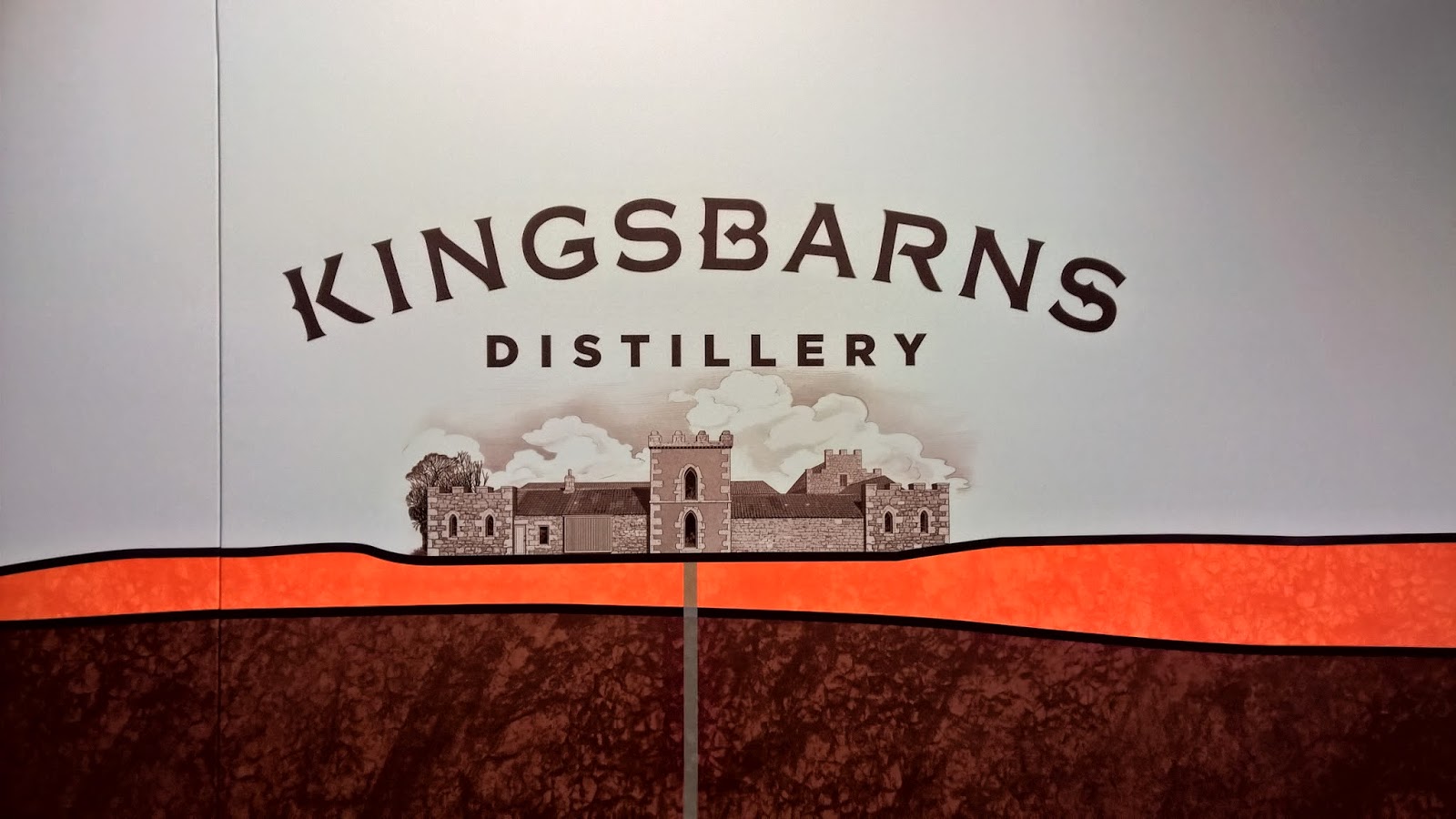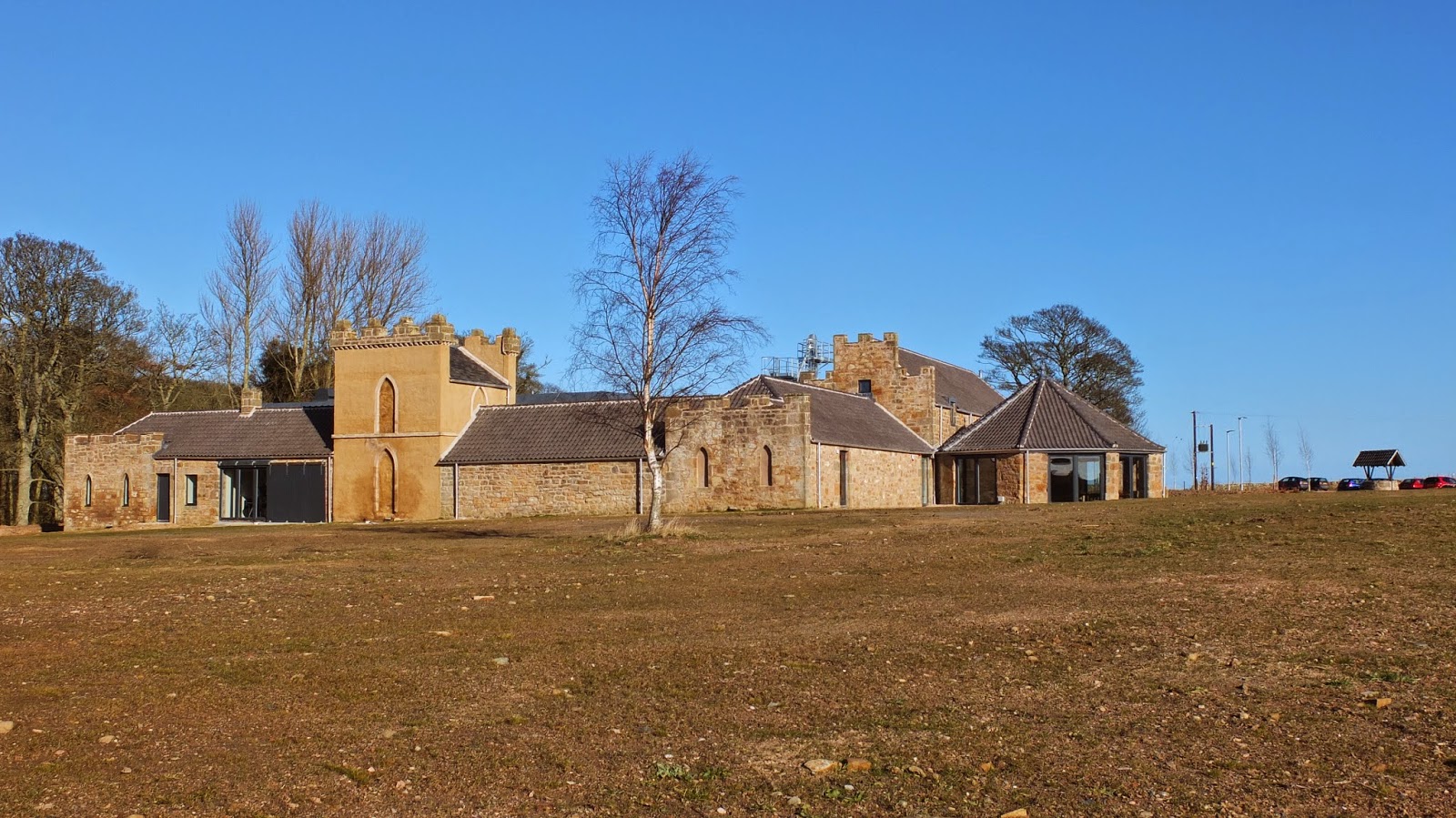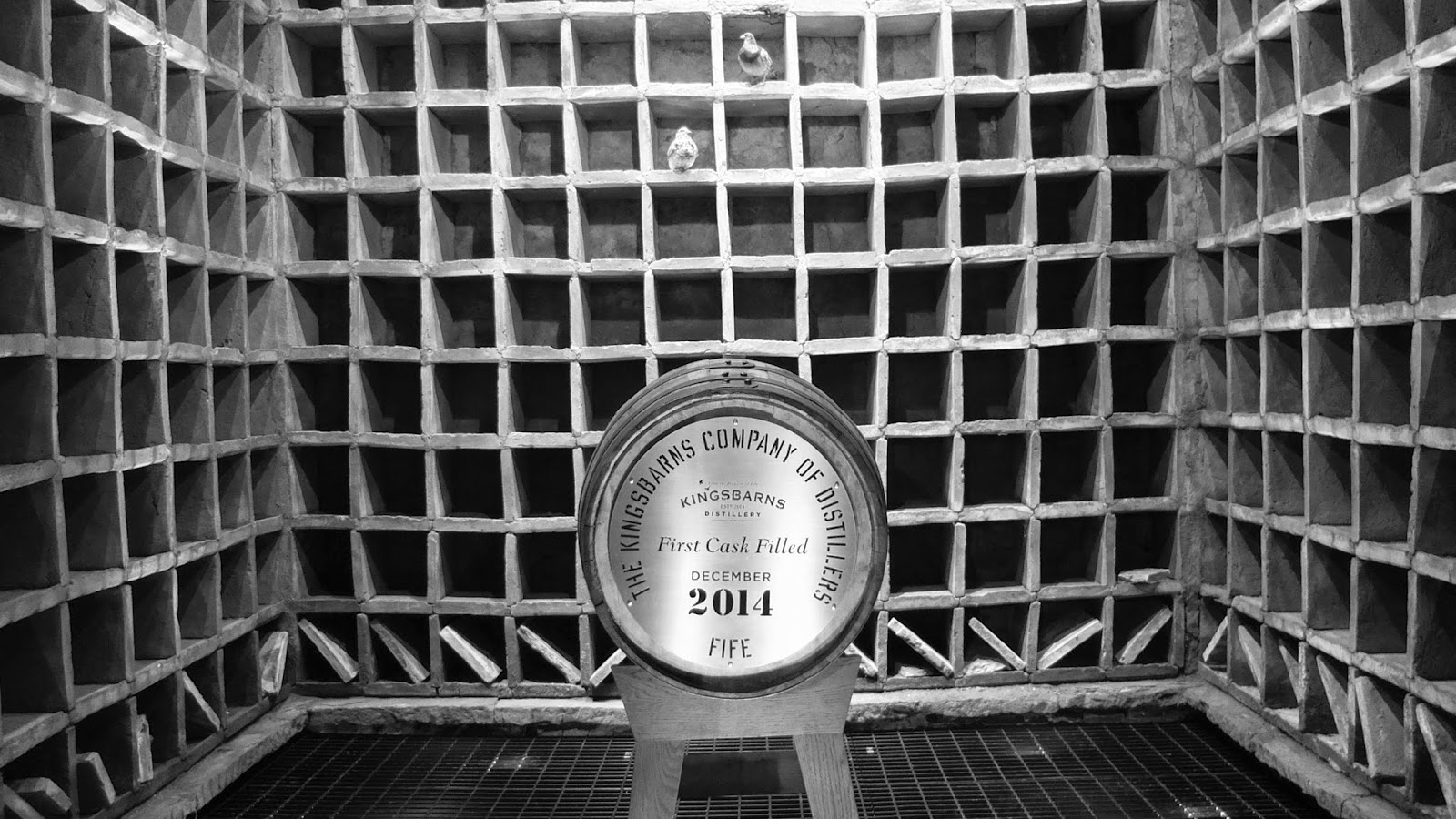Kingsbarns: Dream to Dram Distillery Tour
A gloriously icy pale blue cloudless morning awaited us at Kingsbarns Distillery, after a brisk morning walk around the Old Course in St Andrews. Refreshed and slightly chilled, we headed south along the stunning East Neuk of Fife coastline to the sleepy village of Kingsbarns and just beyond this setting, down a sweeping gravel track, awaits the distillery.
Initially we thought maybe we had taken a wrong turn. The landscape stretched as far as the eye could see; across fields and woodland towards the North Sea. Then just around a corner, the distinctive shape of Kingsbarns distillery appeared out of nowhere. Originally the building prior renovation was an 18th century doocot that had fallen into disrepair. Another word for doocot is dovecot, and these buildings housed pigeons and would have been seen as a sign of status and wealth. In its later life the building was then a mill and home to cows before becoming dormant.
Many years later - I’m starting to feel like a fairy tale voice over here - local golf caddie Douglas Clement had the inspiration to bring a whisky distillery to the region and set about seeking investors to bring this vision to fruition. It is hard to believe but only a few years ago whisky distilleries were not the current vogue as we know today. Never giving up on his dream, the concept received the massive boost into reality when the Wemyss family bought into his vision. The Wemyss family has a long connection with Fife and since 2004 entered the whisky market and began releasing a very successful range of blends and single cask bottlings. Together, Kingsbarns Distillery came into being and started distillation only a couple of weeks ago.
After a pre-tour cuppa in the already popular distillery café we embarked on our tour, which was with Douglas himself, who is now the visitor centre manager. There are 3 tours available with the Kingsbarns (£8, an hour) lasting an hour, the Doocot (£20, 1.5 hours) and the Dream to Dram (£50, 2.5 hours) tour. My choice was the Dream to Dram as this offered the opportunity to explore the distillery in detail and then enjoy an extensive range of the Wemyss blends and single malts. This would prove useful for when I descended downstairs after the tasting, to raid the attractive distillery shop. If you are a real whisky enthusiast then there is only 1 choice when it comes to a tour, as long as you have a driver in tow. St Andrews is only around 8 miles away so for visitors staying nearby, a local taxi is another method of transportation.
Currently Kingsbarns is only in production on weekdays, so the weekend was free of those distinctive aromas and sounds. Next time I’ll go on a weekday for that part of the experience, but the Saturday setting afforded the opportunity to get up close with the distillation equipment and wonder what the stills may give birth to in a couple of years. Needless to say Kingsbarns has no distilling history to base a presentation around currently, but for visitors they have turned to the history of whisky and Fife along with the seasons of nature that play such a vital role in the creation of whisky.
I’ve lived in Fife for most of my life and sometimes you take the history and the way things are around you for granted without further question. The professional presentation offered a moment of reflection and that I should be planting more snowdrops for next year. We then moved onto the cow horn area where each individual vessel offered a whisky scent and you had to guess which it was. My senses were still coming online after a well-earned break the night before but I still managed to correctly guess a couple and enjoyed the interaction. This area of the doocot housed the cattle so the horns have a connection to its prior residents.
Looming at the back of the presentation area is the striking display of the first cask to be filled at the distillery. This comes as Annandale distillery have put up their first cask for sale for the ridiculous price of £1 million. The Kingsbarns cask stands alone in the restored doocot area of the distillery, complete with the sounds of birds and pigeons. It sounds unusual but this link with the past and future works well. An atmospheric setting, offering an almost dunnage warehouse atmosphere and climate, somehow I doubt that Kingsbarns will be going down the Annandale route.
After this display we then moved towards the production side of the distillery but not before a detour to gaze out across the idyllic Fife countryside. As the distillery is in its infancy the exterior is still coming together with the team waiting on Mother Nature to produce an array of wild flowers across its grounds. Also on the to-do-list is a putting green for visitors. The view was enhanced with a dram of the Wemyss blend Lord Elcho thatI reviewed last year. My comments still stand regarding this high malt contentblend and next time I’m up at Kingsbarns I’ll purchase the age statement expression for comparison.
A stack of barrels stood nearby waiting for their opportunity to interact with the new make spirit. These fine ex-bourbon casks have come from Heaven Hill Distillery in Kentucky. Douglas relayed the story of the Wemyss family connections to source this vital ingredient that is in great demand currently. The Speyside Cooperage facility in America has a specialist who selects these casks, which are subsequently transported intact to Fife; a key piece of detail for those who criticise the practice of flat-packing barrels. This should add more flavour to the Kingsbarns whisky and yes, I did ask, they will be experimenting with other casks types including sherry. It’s also worth highlighting that the Wemyss family own the Rimauresq vineyard in France and some examples of their wine are in the distillery shop.
Prior to entering the main hub of production we took in a huge wall chart showing the ground underneath the distillery, which is where Kingsbarns extracts its water from a depth of 60m beneath the surface. The water itself is natural and although Douglas suggested it is a little harder than the water used by many other distilleries, it doesn’t stop Highland Park from creating marvellous whiskies. The malted barley is grown locally in Fife which is fantastic news but as the major maltsters are out with the Kingdom itself, it has to be shipped out before returning. It’s just not financially viable to malt the barley onsite, which was confirmed by Dr Bill Lumsden during a presentation I attended earlier this month celebrating the 200th anniversary of Ardbeg. His nirvana is to have the Ardbeg malting floors revived but Moet Hennessy don’t like the price quoted!
The distillery production takes place in one room and unlike most distilleries today disabled access is catered for throughout the tour. An efficient layout of the various stages takes place on the upper deck before you descend down the stairs to be greeted by the spirit safe and two distinctive stills from Forsyths of Rothes. Douglas highlighted the desire so far to keep the stills looking natural so they haven’t applied any coating to make either of the stills buffed and gleaming.
Initially the plan was to have the stills with tall necks to help facilitate a lighter spirit in the Lowland tradition. Unfortunately due to restrictions regarding the external building (this is a historic site after all) and its appearance they were unable to shape the stills in this manner, as digging down would have been very costly and created its own set of issues. Instead the Lyne arm of both stills is very pronounced and visually impressive. One still is heated internally by a coil whereas the other relies on an external source. Beyond the stills is an area where some a limited number of casks will be racked giving visitors almost the whole process within this single room. Most of the production will be shipped to Glenrothes where another distillery is currently under construction and the warehouses will be shared.
We ascended the stairs to the tasting rooms both of which have been lavishly decorated and panelled with great attention to detail. The Dream to Dram tour includes an in-depth tasting across the Wemyss range. The elegant environment and fine whisky offered another opportunity to talk with Douglas about his inspiration, whisky appreciation and the journey towards realising his dream. It was an inspiring discussion and Douglas is clearly looking forward to the future with his engaging and passionate distillery team. The whisky itself includes the choice of 2 drams from the Wemyss blend range which includes the expressions from 8-12 years old.
For the record the single cask whiskies are from Mortlach, Glen Grant, Clynelish, Glen Scotia and Bunnahabhain so a good range of Scottish single malts are on offer. The unanimous star is the 17 year old Bunnahabhain, closely followed by the Glen Scotia. The tour includes a £5 discount off a bottle from the distillery shop so I purchased the Bunnahabhain. It also includes a Glencairn tasting glass but I forgot all about that little extra.
Needless to say I will be reviewing my Smouldering Hickory (Bunnahabhain) purchase in the coming weeks here at Whisky Rover so watch out for that little gem. Our thanks go out to Douglas and his team for being such welcoming hosts and I’m sure we’ll be back very shortly. I’m delighted that Fife has another distillery to add to the ranks of Daftmill and Eden Mill yet each of the trio retains its own unique appeal and fingers crossed, the whisky itself.
As always I've taken far too many photographs to fit into this piece. You can follow me on Instagram as I drip feed many images of Kingsbarns over the coming months here, or at your own viewing pleasure click through my Facebook album of the visit but be warned there are a few photographs!







